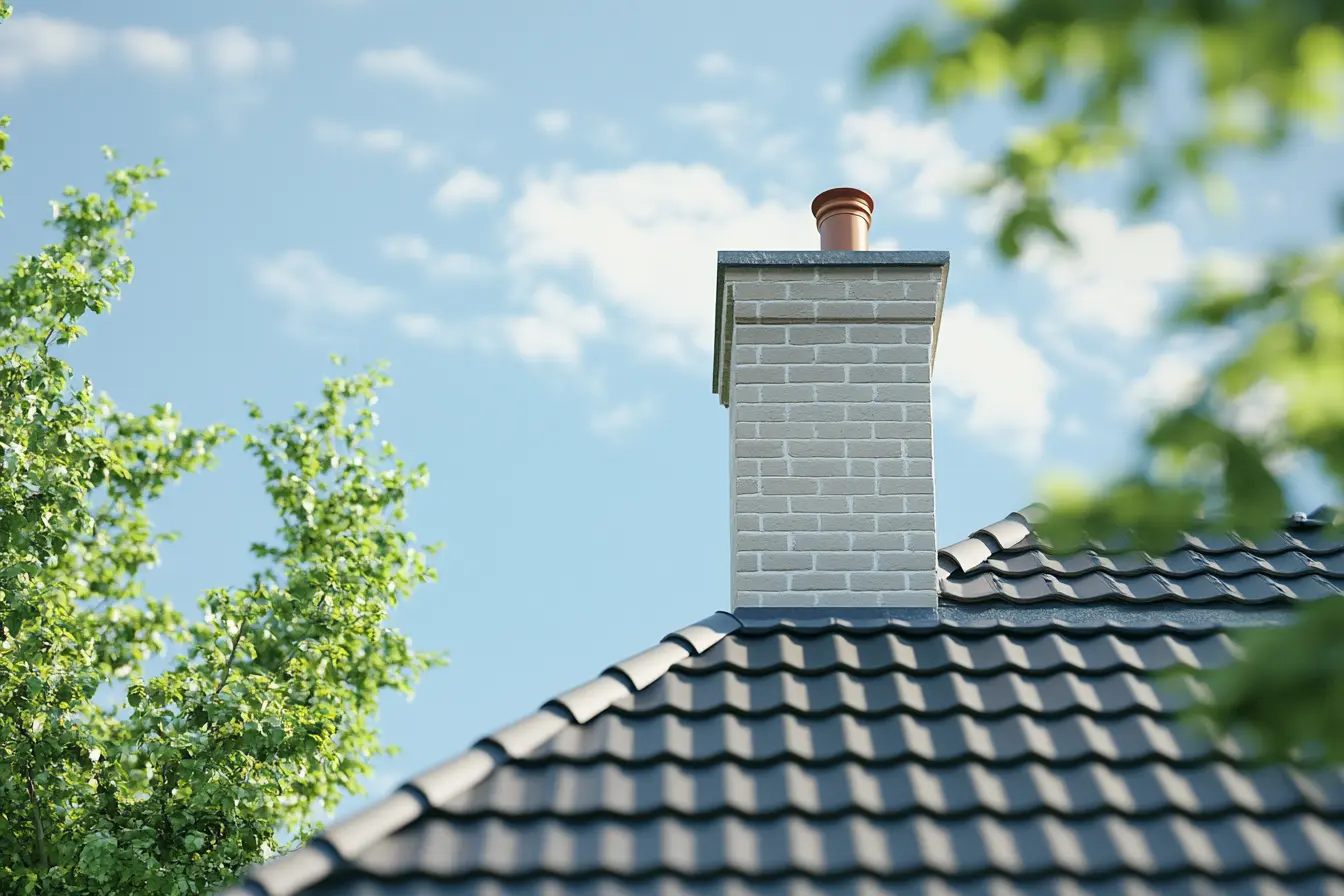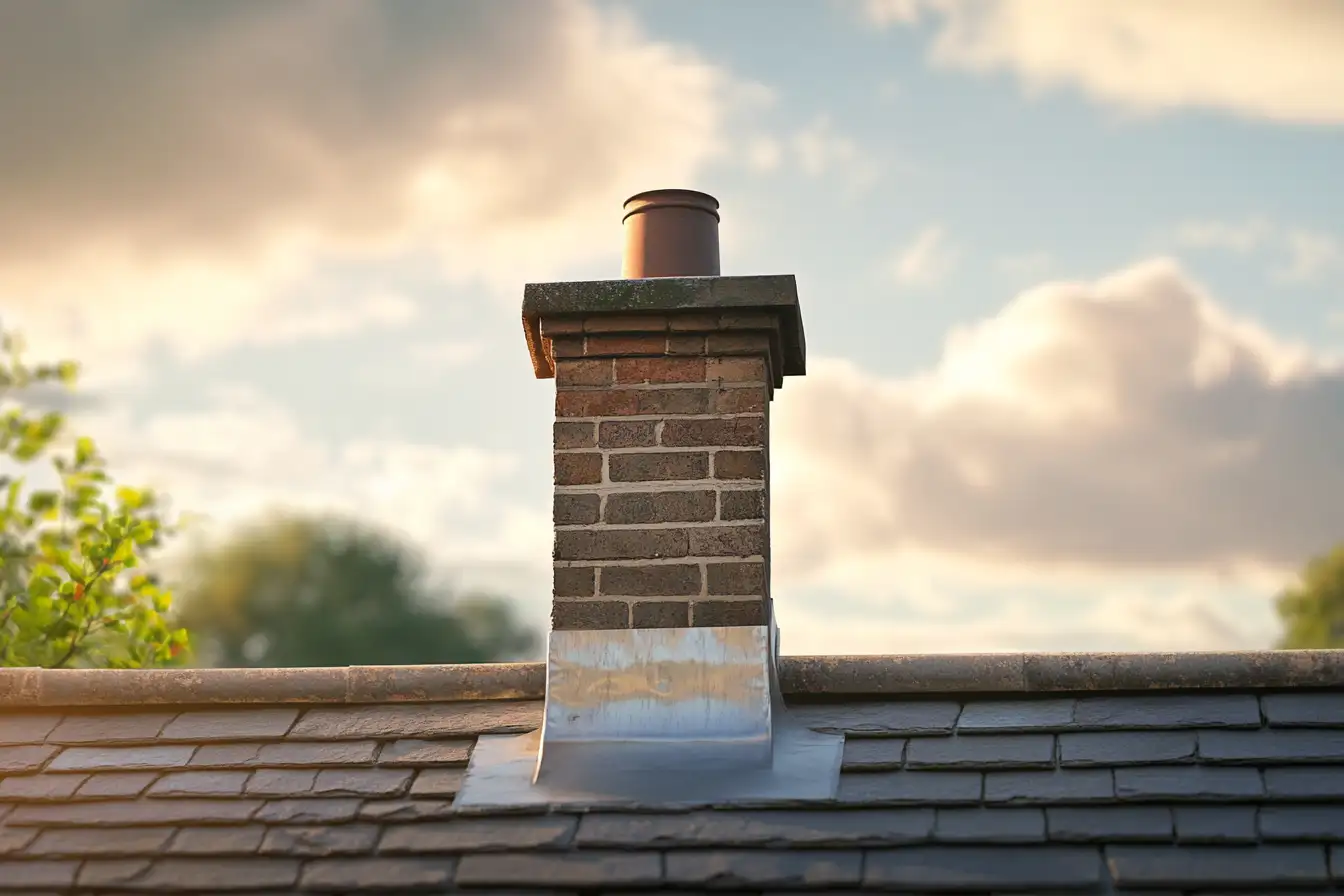Chimney Liner Cost: Ultimate UK Cost Guide [2025]

We may earn a commission on sales through links at no extra cost for you.
Thinking about getting a chimney liner installed? As someone who’s recently gone through this process, I understand how tricky it can be to navigate the costs and options. In this guide, I’ll walk you through everything you need to know about chimney liner costs in the UK, from materials to labor and those sneaky extra expenses that can catch you off guard. Plus, I’ll share some money-saving tips I picked up along the way!
Key Takeaways:
- The average cost of a chimney liner in the UK ranges from £400 to £1,200 incl. installation.
- Factors affecting the price include liner material, chimney height and installation complexity.
- Labor costs typically fall between £200 and £500 per day.
- Most installations can be completed in 1-2 days.
What is a Chimney Liner?
Before we dive into costs, let’s quickly cover what a chimney liner is. A chimney liner is a protective layer installed inside your chimney. It serves several purposes:
- Protects the chimney structure from heat and corrosive byproducts
- Improves the efficiency of your heating appliance
- Reduces the risk of chimney fires
- Prevents carbon monoxide leaks
What Affects Chimney Liner Costs?
I’ve found that several factors influence the overall cost of installing a chimney liner:
- Liner material: Flexible stainless steel liners are cheaper than rigid ones.
- Chimney height and diameter: Taller chimneys require more liner material.
- Ease of access: Difficult-to-reach chimneys may increase labour costs.
- Type of fuel: Different liners are required for wood, gas, or oil-burning appliances.
- Existing chimney condition: Repairs or preparation work may be necessary.
- Location: Labour rates vary across the UK, with London and the South East generally being pricier.
- Additional components: Cowls, pots, or bird guards can add to the cost.
🫰 Breakdown: How Much does a Chimney Liner Cost in the UK?
Let’s look at the average costs for different liner types and chimney heights. These figures include both materials and standard installation costs:
| Liner Type | 6m Chimney | 9m Chimney | 12m Chimney |
|---|---|---|---|
| Flexible Stainless Steel | £400 - £700 | £500 - £900 | £600 - £1,100 |
| Rigid Stainless Steel | £700 - £1,000 | £900 - £1,300 | £1,100 - £1,600 |
| Clay or ceramic | £1,000 - £1,500 | £1,300 - £1,900 | £1,600 - £2,300 |
Remember, these are average figures. Your actual costs may vary depending on the factors mentioned earlier.
Example: Chimney Liner Cost incl. Installation near London
Here’s a more detailed example for a stainless steel liner for 9 m chimney near London. This example includes some extra costs which people often don’t calculate in:
| Overview | Cost |
|---|---|
| Flexible stainless steel liner (9m) | £350 |
| Labor (1 day) | £400 |
| Chimney cowl | £75 |
| Flue collar and adaptors | £75 |
| Total | £900 |
I opted for a flexible stainless steel liner for my own chimney, as it offered a good balance of durability, its relatively easy installation and reasonable cost.
🏠 4 Popular Types of Chimney Liners and Their Costs
Different types of chimney liners have their offer different pros and cons. Here’s an overview of the most popular types in the UK:
- Flexible stainless steel liners
- Cost: £150 – £400 for materials
- Pros: Easy to install, suitable for most chimneys
- Cons: Shorter lifespan than rigid liners
- Rigid stainless steel liners
- Cost: £300 – £600 for materials
- Pros: Durable, smooth interior improves draft
- Cons: More difficult to install, especially in chimneys with bends
- Clay or ceramic liners
- Cost: £400 – £800 for materials
- Pros: Long-lasting, can handle high temperatures
- Cons: Expensive, heavy, and difficult to install
- Cast-in-place liners
- Cost: £500 – £1,000 for materials
- Pros: Forms to the chimney, excellent insulation
- Cons: Expensive, requires professional installation
Labor Costs for Chimney Liner Installation
Most chimney specialists charge a daily rate, which typically falls between £200 and £500. Some may offer a fixed price for the entire job. Here’s a rough guide to labour costs:
- Standard liner installation: £200 – £400 per day
- Complex installations or repairs: £300 – £500 per day
Additional Costs to Consider
When budgeting for your chimney liner, don’t forget these potential extra expenses:
- Chimney inspection: £50 – £100
- Chimney sweeping: £50 – £100
- Scaffolding hire (if required): £400 – £800 per week
- Roof ladder hire: £30 – £50 per day
- Flue terminal: £20 – £50
In my case, I needed a chimney sweep and some minor repairs, which added about £150 to the total cost.

The Chimney Liner Installation Process
To help you understand what’s involved, here’s an overview of the typical installation process:
- Chimney inspection and sweep: Ensure the chimney is clean and in good condition
- Preparation: Protect the area around the fireplace
- Liner insertion: Feed the liner down from the top of the chimney
- Connection: Attach the liner to the appliance and chimney top
- Insulation: Add insulation around the liner if required
- Testing: Check for proper draft and seal
DIY vs Professional Chimney Liner Installation: Is It Worth It?
While DIY installation can save money, I recommend professional installation for most cases. Here’s why:
- Safety: Improper installation can lead to carbon monoxide leaks or chimney fires
- Expertise: Professionals can handle unexpected issues that arise during installation
- Time-saving: A professional team can complete the job much faster than a DIY attempt
- Guaranteed results: Many professionals offer warranties on their work
The cost difference between DIY and professional installation isn’t as significant as you might think when you factor in tool hire, materials, and potential mistakes.
⏱️ How long does it take to install a chimney liner?
On average the total time for a standard installation in a 9m chimney ranges from 5-8 hours (usually completed in one day). The time required to install a chimney liner depends on several factors:
- Chimney height and complexity
- Liner type (flexible or rigid)
- Ease of access to the chimney
- Any necessary preparatory work
I always suggest allowing for a full day, just in case any unexpected issues arise.
Tips to Keep Your Chimney Liner Installation on Schedule
- Ensure clear access to the chimney and surrounding areas.
- Remove any obstacles from the roof area near the chimney.
- If possible, clear the room with the fireplace to give installers space to work.
- Be available to make quick decisions if any issues are discovered during installation.

How to Find a Reliable Chimney Liner Installer
Finding a trustworthy installer is crucial for a safe and effective chimney liner installation. Here’s how I approached it:
- Check credentials: Look for membership in trade associations like HETAS or the National Association of Chimney Sweeps.
- Read reviews: Check online ratings and ask for references from previous clients.
- Get detailed quotes: Insist on written quotes that break down all costs, materials, and timelines.
- Ask about experience: Enquire about their history with your specific type of installation.
- Verify insurance: Ensure they have proper liability insurance to protect you and your property.
- Clear communication: They should be able to explain the process clearly and answer your questions without hesitation.
💷 7 Tips to Reduce Your Chimney Liner Costs
As someone who loves a good deal, here are my top tips for saving on your chimney liner installation:
- Compare quotes: Get at least three quotes from reputable installers
- Consider timing: Some installers offer discounts during off-peak seasons
- Prepare the area: Clear the space around your fireplace to reduce labour time
- Opt for a flexible liner: If suitable for your chimney, these are often cheaper to install
- Combine services: If you need a chimney sweep or inspection, bundle it with the installation
- Maintain your chimney: Regular maintenance can prevent the need for more expensive repairs
- Check for grants: Some areas offer grants for improving home heating efficiency
🌿 Environmental and Safety Considerations
When choosing a chimney liner, consider these factors:
- Improved efficiency: Proper lining enhances heating efficiency, reducing fuel use and emissions.
- Safety: Liners decrease fire risk and improve ventilation, reducing smoke and carbon monoxide dangers.
- Durability: High-grade stainless steel liners last longer, minimizing replacements.
- Eco-friendly options: Insulated liners and local installers further reduce environmental impact.
While eco-friendly choices might increase costs by 10-20%, they offer long-term benefits in safety, efficiency and durability. This investment often pays off through energy savings and increased home safety. A well-installed chimney liner not only protects your home but also contributes to a cleaner environment.
FAQs
Q: How much does a chimney liner cost on average in the UK? A: On average, a chimney liner in the UK costs between £400 and £1,200 including installation.
Q: How long does a chimney liner last? A: The lifespan of a chimney liner depends on the material and maintenance. Stainless steel liners typically last 15-20 years, while clay or ceramic liners can last 50 years or more with proper care.
Q: Do I need planning permission to install a chimney liner? A: Generally, you don’t need planning permission to install a chimney liner. However, if you’re making significant changes to the chimney structure or if you live in a listed building, you should check with your local planning authority.
Q: Can I use my fireplace immediately after liner installation? A: It’s best to wait 24-48 hours after installation before using your fireplace. This allows any sealants used during installation to cure properly.
Q: Do I need a chimney liner if I have a gas fireplace? A: Yes, gas fireplaces still produce combustion gases that can corrode your chimney. A liner helps protect the structure and ensure proper venting.
Q: Will a chimney liner reduce the risk of chimney fires? A: Yes, a properly installed liner can significantly reduce the risk of chimney fires by containing sparks and reducing creosote buildup.
Conclusion
A properly installed and maintained chimney liner not only improves your home’s heating system but also provides peace of mind knowing that your fireplace is operating safely and efficiently.
I’ve also found that the cheapest quote isn’t always the best value. Consider the installer’s experience, the quality of materials used and the long-term benefits of a well-installed chimney liner. Don’t hesitate to get multiple quotes to ensure you’re getting the best value for your money.
Frank is a journalist and home improvement enthusiast who recently bought and renovated his own house. After several challenges and discovering how tricky it can be to find reliable cost information, he decided to share his experiences through practical cost guides.